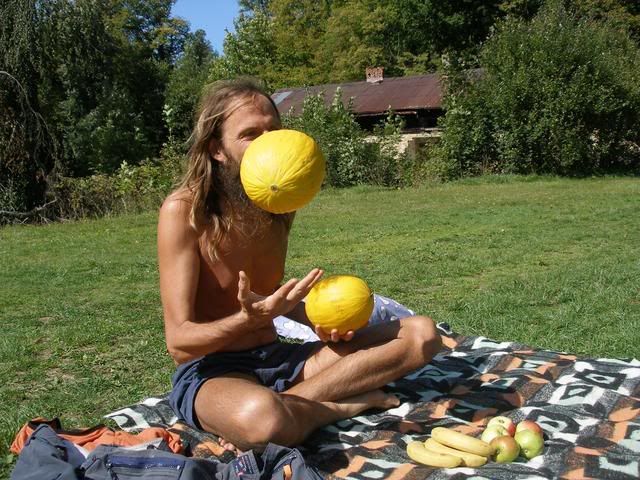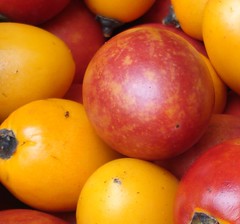Some evidence supporting our basic herbivorous natures:
Anatomical Chart Comparison of Human and Carnivore/Omnivor/Herbivore/Frugivore
| Carnivore | Herbivore | Omnivore | Human | |
| Facial Muscles | Reduced to allow wide mouth gape. | Well developed | Reduced | Well developed |
| Jaw Type | Angle not expanded - Vertically mobile for biting or tearing. | Expanded angle - Laterally mobile to allow chewing of food. | Angle not expanded - Vertically mobile for biting or tearing. | Expanded angle - Laterally mobile to allow chewing of food. |
| Jaw Joint Location | On same plane as molar teeth | Above the plane of the molars | On same plane as molar teeth | Above the plane of the molars |
| Jaw Motion | Shearing; minimal side-to-side motion | No shear; good side-to-side, front-to-back | Shearing; minimal side-to-side motion | No shear; good side-to-side, front-to-back |
| Major Jaw Muscles | Temporalis | Masseter and pterygoids | Temporalis | Masseter and pterygoids |
| Mouth Opening vs. Head Size | Large | Small | Large | Small |
| Teeth: Incisors | Short and pointed | Broad, flattened and spade shaped | Short and pointed | Broad, flattened and spade shaped |
| Teeth: Canines | Long, sharp and curved | Dull and short or long (for defense), or none | Long, sharp and curved | Short and blunted |
| Teeth: Molars | Sharp, jagged and blade shaped | Flattened with cusps vs complex surface | Sharp blades and/or flattened | Flattened with nodular cusps |
| Chewing | None; swallows food whole | Extensive chewing necessary | Swallows food whole and/or simple crushing | Extensive chewing necessary |
| Saliva | No digestive enzymes - Acidic saliva for the digestion of animal protein; the enzyme ptyaline lowly developed salivary glands. | Carbohydrate digesting enzymes - Alkaline salive pour a quick breakdown of food developed Salivary glands for pre-digestion. | No digestive enzymes - Acidic saliva for the digestion of animal protein; the enzyme ptyaline lowly developed salivary glands. | Carbohydrate digesting enzymes - Alkaline salive for a quick breakdown of food developed Salivary glands for pre-digestion. |
| Stomach Type | Simple | Simple or multiple chambers | Simple | Simple |
| Stomach Acidity | Less than or equal to pH 1 with food in stomach | pH 4 to 5 with food in stomach | Less than or equal to pH 1 with food in stomach | pH 4 to 5 with food in stomach |
| Stomach Capacity | 60% to 70% of total volume of digestive tract | Less than 30% of total volume of digestive tract | 60% to 70% of total volume of digestive tract | 21% to 27% of total volume of digestive tract |
| Length of Small Intestine | 3 to 6 times body length | 10 to more than 12 times body length | 4 to 6 times body length | 10 to 11 times body length |
| Colon | Simple, short and smooth | Long, complex; may be sacculated | Simple, short and smooth | Long, sacculated |
| Liver | Can detoxify vitamin A | Cannot detoxify vitamin A | Can detoxify vitamin A | Cannot detoxify vitamin A |
| Kidney | Extremely concentrated urine | Moderately concentrated urine | Extremely concentrated urine | Moderately concentrated urine |
| Nails | Sharp claws | Flattened nails or blunt hooves | Sharp claws | Flattened nails |
| Thermo -stasis | Hyper -ventilation | Perspiration | Hyper -ventilation | Perspiration |
| Vitamin C | Can produce it without vitamin C rich food | Needed from the daily food | Can produce it without vitamin C rich food | Needed from the daily food (fruits). |
| Urine | Acid | Alkaline | Acid | Alkaline |
| Skin | No pores. No transcutaneous sweating. | millions of pores. Glands capable of sweating. | No pores. No transcutaneous sweating. | millions of pores. Glands capable of sweating |
Adapted from The Comparative Anatomy of Eating by Milton R. Mills, M.D.
Although not exactly evidence of our fundamental fruitarian-ness, nevertheless still relevant and interesting.. I'd love to see an additional column labeled fruitarians..
hugs,
mango.
Playing by the lake in the Czech Republic, 2006:

Blogged with Flock



3 comments:
Hello, Mango!
I'm working on a presentation on why fruit is the natural food for humans, would it be alright if I used these anatomical charts as examples?
Hi Rainskull,
sure, please send me your chart when it is done, and I will post it here too..
regards,
Mango.
Okay, thanks! I'll be sure to do that.
Post a Comment